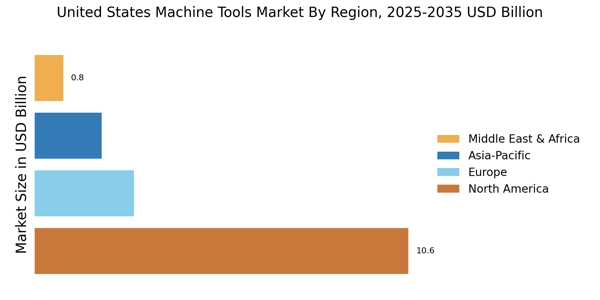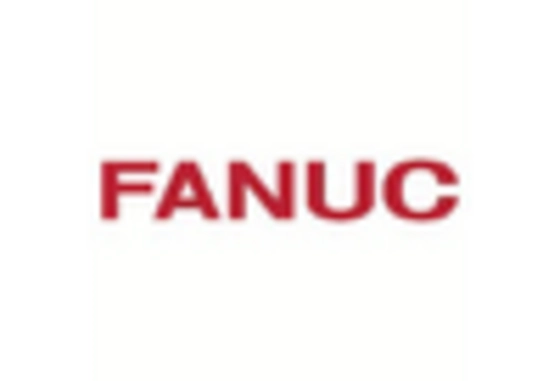Rising Focus on Workforce Skill Development
The machine tools market is also being shaped by the rising focus on workforce skill development. As technology evolves, there is an increasing need for skilled labor capable of operating advanced machinery and understanding complex manufacturing processes. In 2025, the demand for skilled workers in the machine tools market is projected to grow by 15%, driven by the need for expertise in operating CNC machines and other sophisticated equipment. Educational institutions and training programs are responding to this demand by offering specialized courses aimed at equipping the workforce with necessary skills. This emphasis on skill development not only enhances productivity but also ensures that manufacturers can effectively leverage new technologies. Consequently, the machine tools market is likely to benefit from a more competent workforce, fostering innovation and efficiency in production.
Shift Towards Smart Manufacturing Solutions
The machine tools market is increasingly influenced by the shift towards smart manufacturing solutions. As industries embrace the Internet of Things (IoT) and Industry 4.0 principles, there is a growing need for machine tools that can integrate seamlessly with digital technologies. This trend is expected to enhance operational efficiency and reduce downtime, as real-time data analytics enable predictive maintenance and process optimization. By 2025, the market for smart machine tools is anticipated to grow by approximately 25%, reflecting the industry's commitment to innovation. Manufacturers are likely to invest in advanced machinery equipped with sensors and connectivity features, which will not only improve productivity but also facilitate better decision-making processes. This shift towards smart manufacturing solutions indicates a transformative phase for the machine tools market.
Technological Advancements in Manufacturing
The machine tools market is experiencing a notable transformation due to rapid technological advancements. Innovations such as computer numerical control (CNC) and additive manufacturing are enhancing precision and efficiency in production processes. In 2025, the market is projected to reach approximately $8 billion, driven by the increasing demand for high-quality and customized products. These advancements not only improve productivity but also reduce waste, aligning with the industry's shift towards lean manufacturing practices. As manufacturers adopt these technologies, the machine tools market is likely to witness a surge in demand for sophisticated machinery that can accommodate complex designs and high-volume production. This trend indicates a robust growth trajectory for the machine tools market, as companies strive to remain competitive in an evolving landscape.
Increased Investment in Infrastructure Development
Infrastructure development in the United States is poised to significantly impact the machine tools market. With the government prioritizing investments in transportation, energy, and public works, the demand for machine tools is expected to rise. In 2025, infrastructure spending is projected to exceed $1 trillion, creating a substantial need for machinery capable of producing components for construction and maintenance projects. This influx of investment is likely to stimulate growth in the machine tools market, as construction companies require reliable and efficient equipment to meet project deadlines. Furthermore, the emphasis on modernizing existing infrastructure will drive the need for advanced machine tools that can handle diverse materials and complex designs, thereby enhancing the overall market potential.
Growing Demand from Aerospace and Automotive Sectors
The aerospace and automotive sectors are significant contributors to the machine tools market, driving demand for advanced machining solutions. In 2025, these industries are expected to account for over 40% of the total market share, reflecting their reliance on precision-engineered components. The aerospace sector, in particular, is witnessing a surge in production rates, necessitating the use of high-performance machine tools to meet stringent quality standards. Similarly, the automotive industry is increasingly adopting automation and advanced machining techniques to enhance efficiency and reduce production costs. This growing demand from key sectors suggests a favorable outlook for the machine tools market, as manufacturers seek to invest in cutting-edge technologies to fulfill their production needs.


















Leave a Comment